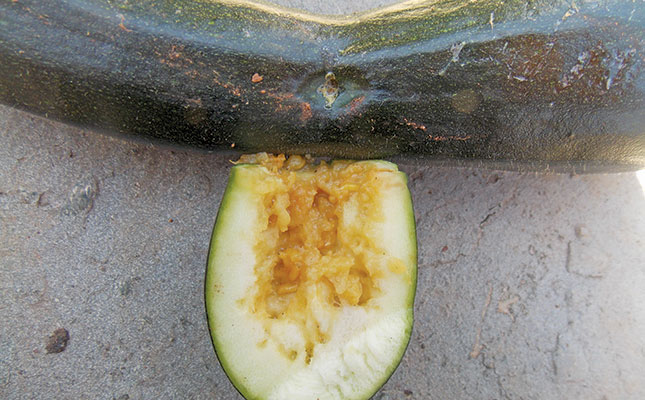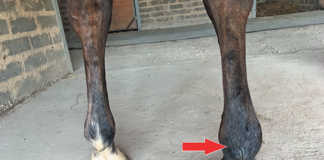
Photo: Bill Kerr
One of the most common and destructive pests is cutworm. Fortunately, these can be controlled easily and at low cost by using a pyrethroid.
Apply before transplanting, especially if pest numbers are high. If you are planting seed directly, mix the insecticide in with the pre-emergent herbicide.
The leaf miner can also become a pest if the wrong insecticide is used, as some insecticides kill off parasitic wasps that keep leaf miners under control. This is why it is crucial to use products that are safe for predators and other beneficial insects.
Many farmers know about the potato lady beetle, which can cause havoc on crops such as potatoes and Swiss chard. It’s a large, duller beetle than the beneficial ladybird.
The cucurbit ladybird is another common pest. This is orange with black spots, whereas the potato ladybird is black with orange spots. It is easy to confuse them. If you’ve experienced potato lady beetles and then spot cucurbit ladybirds on your crop, you may feel tempted to control them. This is unnecessary as they cause very little damage.
The Pumpkin Fly
One of the most destructive pests is the pumpkin fly (Dacus spp). This is similar in appearance to the fruit fly, but is brown. A severe infestation will render a crop unmarketable.
The population is usually small at the start of the season, but increases rapidly later. Severe cold or a long break between host crops often see their numbers decreasing quite dramatically.
Few flies emerge during early summer on the Highveld, and this is the time to get rid of them. This year, I found that only one or two females had hatched. Although these females stung the fruit, their eggs were infertile because no males had hatched as yet.
It’s important to inspect the first developing fruit for signs of their presence and stop the potential invasion before it starts.
When planting baby marrows, you may find the female flowers developing first. As these were not fertilised, they will not continue developing. When left on the plants, they are a potential breeding ground for pumpkin flies.
The fly stings the young fruit and deposits her eggs. The maggots hatch out within a week or so, and start eating the fruit. When mature, they fall to the ground, migrate to a new site and pupate in the soil.
The flies emerge between one and three weeks later and lay their eggs. The life cycle is about two months.
Stung fruit should always be destroyed. To do this, enclose it in a plastic bag and close the bag tightly; the fruit will ’cook’ in the sun.
Control
Eradicate pumpkin flies as soon as possible, either by spraying or baiting. If the former, choose a product containing fenthion, which also kills the eggs and maggots. Spray thoroughly, especially on the fruit.
For bait, mix 150mℓ of mercaptothion with 4kg of sugar in 20ℓ of water. Use a disc with a hole as a nozzle to create a coarse jet of the mixture, and spray it at 40ℓ/ha. Apply it after rain or by irrigation at intervals of seven to 10 days.
Bill Kerr is a vegetable specialist and breeder.










